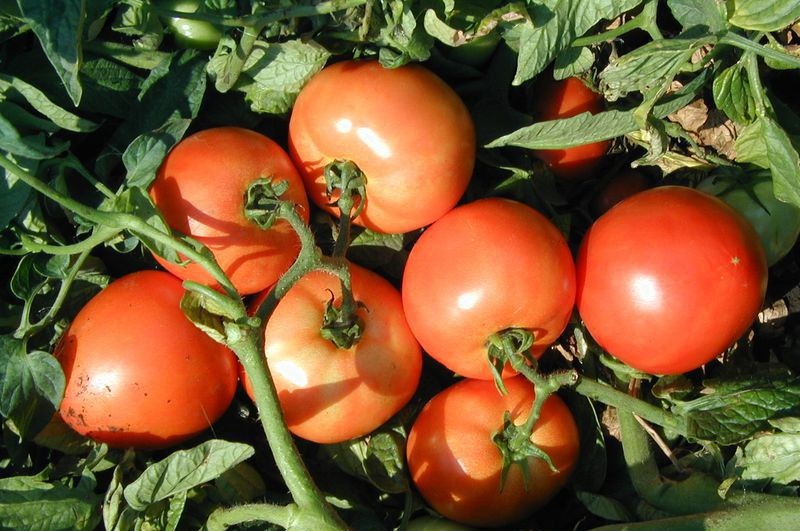 Bagira Tomato was bred by domestic breeders for temperate Russian regions. Vegetables of this variety can be grown both on the open ground and in the greenhouse, they are not afraid of temperature jumps, and also will not spend your time on pinching and long-term struggle with harmful insects.
Bagira Tomato was bred by domestic breeders for temperate Russian regions. Vegetables of this variety can be grown both on the open ground and in the greenhouse, they are not afraid of temperature jumps, and also will not spend your time on pinching and long-term struggle with harmful insects.
A hybrid of early ripening is something that suits many beginner and advanced summer residents because of its high yield, resistance to many adverse factors and unpretentiousness. It is well stored for a month and during transportation over long distances. Suitable for cooking any dishes.
Content
Characteristic and Description
Bagira is a hybrid with an early ripening period of about 60 - 100 days, with a compact, determinant bush that will save space on the bed. Ripe fruits can ripen with whole brushes in the amount of 5 - 6 pieces. A yield of 1 square. m - about 10 kg of tomatoes, which are distinguished by their resistance to cold and to diseases.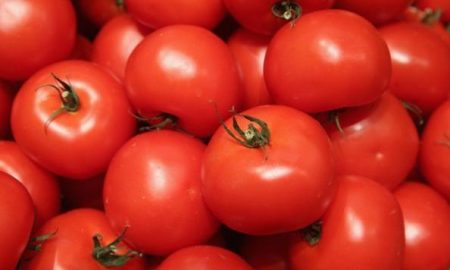
The fruits themselves are small in total mass - 100 - 250 g. They have a rounded shape with ribbing at the peduncle, red, juicy, dense and not watery, sweet in taste, with a thin and dense skin.
Advantages
Taking into account all the opinions and observations of summer residents, we can distinguish the following list of advantages:
- Short ripening period;
- Pleasant taste and aroma;
- Saving space on the garden, thanks to compact bushes;
- Resistance to reduced watering and cold weather;
- Not susceptible to diseases and pests.
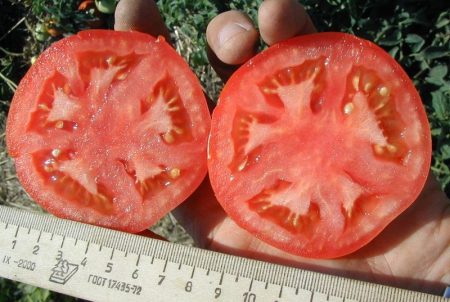
Features of cultivation and care
In general, such tomatoes are unpretentious in care. The most basic actions are the key to the well-being of the plant.
- Loosen the soil every 4 days. Try not to damage the roots.
- If you decide to tie up the bushes, then do not use coarse fabrics and wire, otherwise over time, they can cut the stem.
- Plants feel good in soils where they were previously planted: cabbage, carrots, squash.
Growing seedlings
- The most convenient method of growing is seedling. Seeds do not need separate processing, hybrids purchased only in the store have already passed the necessary procedure before sale.
- For seedlings, a composition of humus and peat with a calculation of 50/50 is suitable.
- Sowing seeds is to a depth of not more than 2 cm. Ashes should be added to pits for prevention from pests - ash.
- Freshly planted plantings must be sprayed with warm water until the first shoots. Young shoots should be kept warm and the planting pattern of no more than 6 plants per 1 sq. m
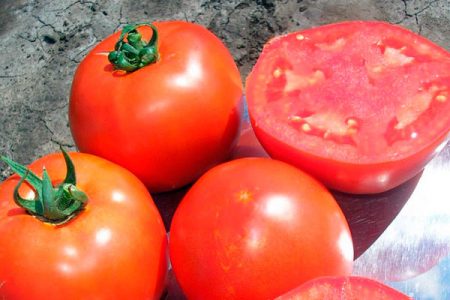
- And the appearance of the first leaves already suggests that it is time to carry out liquid fertilizing with mineral fertilizer every couple of weeks.
- Also, for a more confident development, seedlings should be subjected to gradual hardening for a longer time. In the beginning, an hour is enough, but as they get stronger, and are ready to land in the open ground, you can leave it for the whole day.
Transplanting seedlings into the ground
- Planting in open beds is in early June or late May. The first days should be covered with a film coating.
- Landing should be done by calculation between bushes of 50 - 65 cm. Support is not needed.
- Although the hybrid is not susceptible to disease, it is recommended to treat the soil with a hot solution of potassium permanganate for prevention.
- It was noticed that “Bagira” is not peculiar to pest attacks; nevertheless, it is advisable to spray young bushes with non-toxic preparations, a weak potassium permanganate solution or ammonia.
Watering
- A suitable method of irrigation is drip, warm, standing water is especially suitable.
- Control the watering. Do not overfill or crack the soil. For seedlings, 1 - 1, 5 liters is enough, during flowering - up to 20 - 25 liters per 1 square. m, with the fruit set - 35 - 40 liters per 1 square. m, with the ripening of the ovaries - 60 - 70 liters per 1 square. m
- If you started picking tomatoes, cut back on watering. Otherwise, it threatens the fruits with crackling and disease.
- Do not pour water on the green mass.
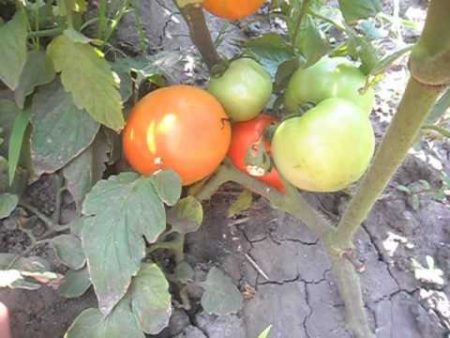
Top dressing
For a more friendly ripening of fruits, complete nutrition is important. Many summer residents carry out this procedure in stages.
The first stage is the application of fertilizers (8 g of saltpeter + 20 g of superphosphate and potassium salt) after 14 to 16 days per 1 sq. Km. m
The second stage - after 2, 5 - 3 weeks, the addition of phosphorus and potash fertilizers.
Testimonials from tomato growers
Vasilisa: My family is very fond of tomatoes, and therefore we grow many different varieties. Including, and we plant "Bagheera". She is not whimsical. When their season ends, the ripened, unripe fruits ripen themselves. I mulch the soil with straw with humus. With 1 sq. m gained 8.5 kg. Seedlings are very fond of light, tried to keep it more in bright places. Suitable for any dish. Do not worry, I will buy again.
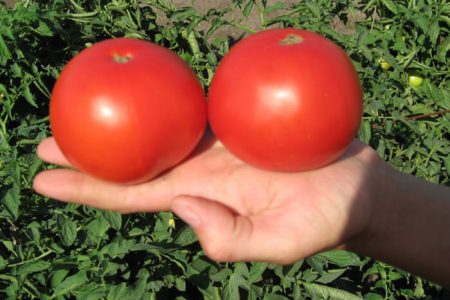
Peter: The weather in our area did not please, but, despite this, Bagira pleased it with a good harvest. Tomatoes are beautiful and tasty, in the bank they look good for winter conservation. They lay fresh 20 days and did not spoil. Although the summer was very rainy so that the bushes did not pick up rot, I process the stems with 1% Bordeaux liquid. I plant in those places where they are aired. And they were never sick or struck by insects.




 Low-growing tomatoes, without pinching: 5 of the most delicious varieties
Low-growing tomatoes, without pinching: 5 of the most delicious varieties Why tomato seedlings grow poorly
Why tomato seedlings grow poorly We grow a tomato in a shell
We grow a tomato in a shell Growing tomatoes without watering according to the method of Kazarin
Growing tomatoes without watering according to the method of Kazarin